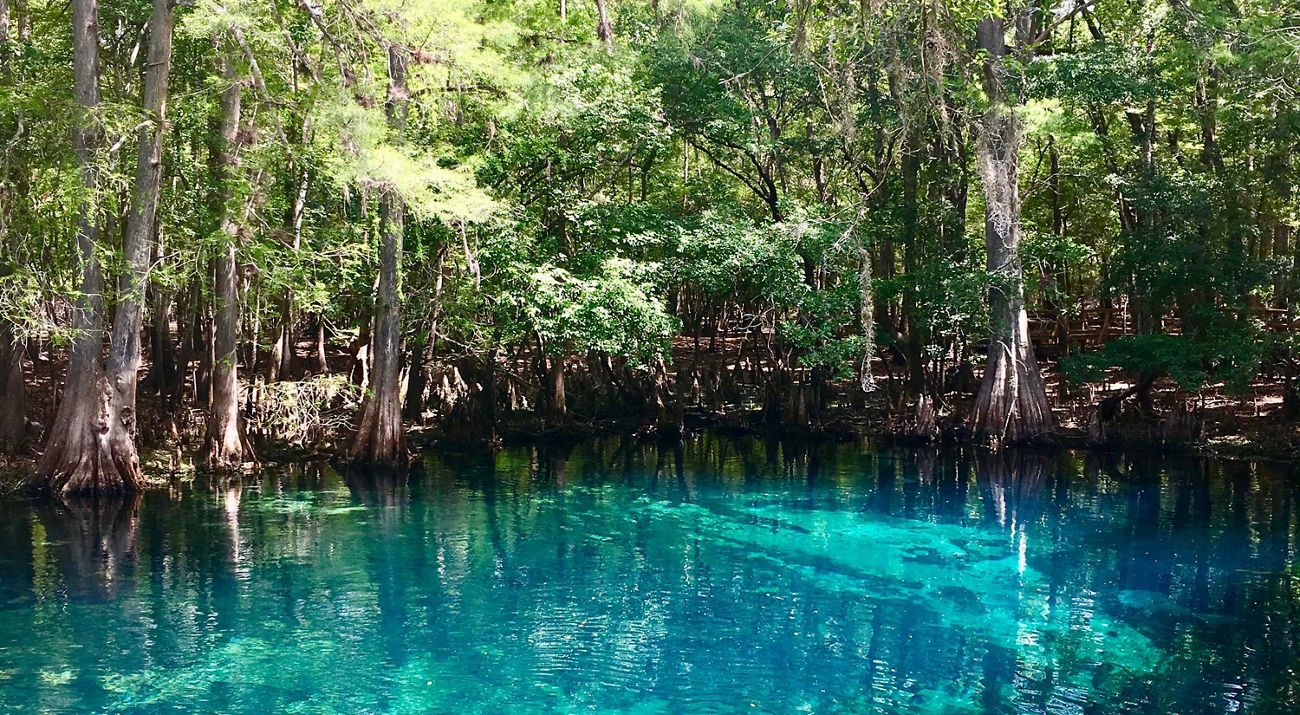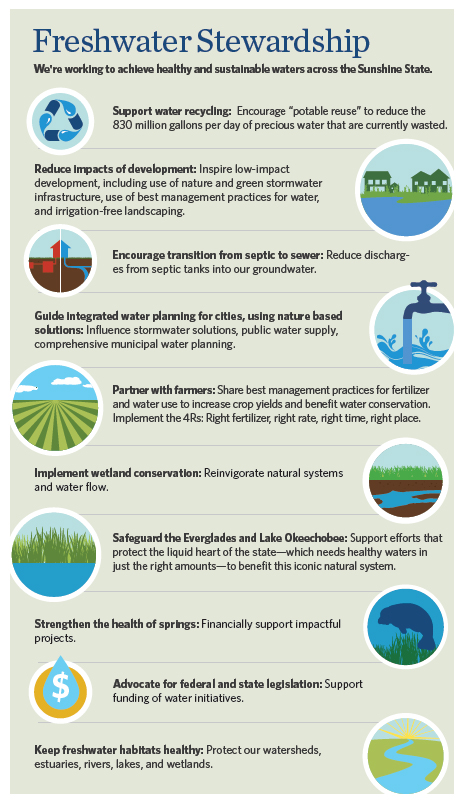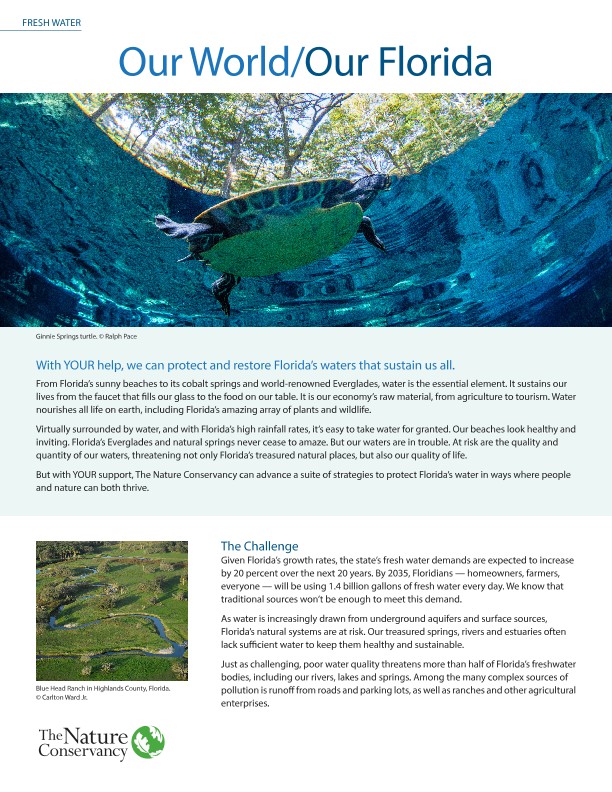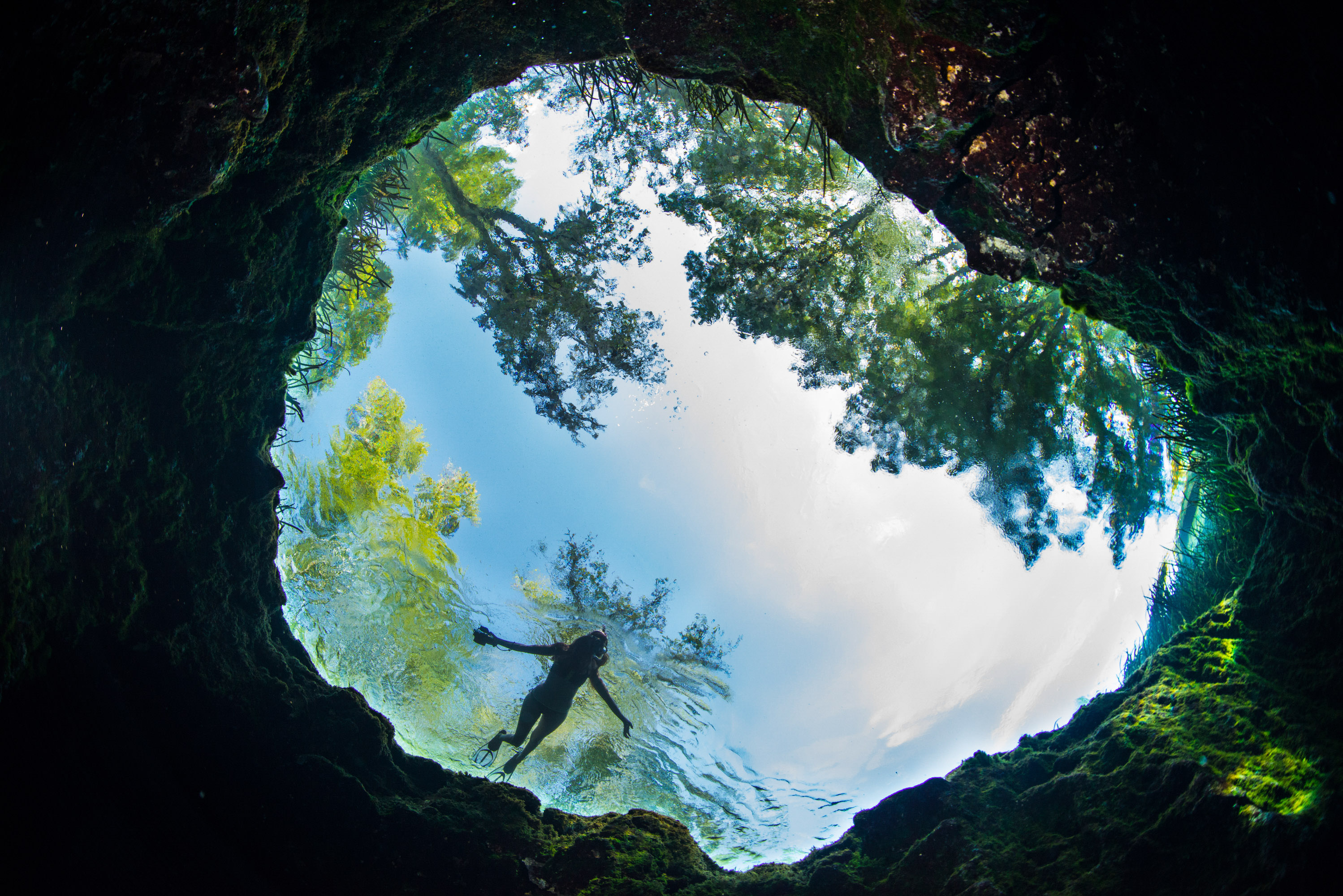
Protecting Fresh Water
We're working to ensure clean water for Florida’s people and nature.
Download
Download or view the infographic to learn the many ways we're working to achieve healthy and sustainable waters across the Sunshine State.
DownloadOur long-term vision for freshwater conservation in Florida is simple but ambitious: Florida must have enough clean water for both people and nature.
The Florida Everglades, one of the only great grasslands in the world, is marked by a silent, slow sheet of fresh water moving above and below ground. This vast wetland provides water to nearly 8 million people living in the southern stretches of the state. The Everglades recharges the aquifer as it slowly soaks up and releases waters southward. As a result of past wetland drainage, Florida has lost large supplies of fresh water for both people and wildlife. But that loss does not have to be permanent.
We're working to protect, restore and connect lands and wetlands critical to the replenishment of the state’s aquifers. These lands provide critical habitat for wide-ranging species, like the Florida panther and black bear, as well as other species such as the red-cockaded woodpecker and sandhill crane. We completed restoration of the wetlands on our Disney Wilderness Preserve, perfecting the process of wetlands restoration over the last 20 years and applying lessons learned to help restore other conservation land. We work with ranchers in the northern Everglades to reduce agricultural water use and nutrient run-off and to protect lands for water recharge. This has provided a foundation for meaningful change in the Everglades.

We helped preserve 350,000 acres and facilitated expenditure of $280 million dollars through federal programs to protect and restore wetlands that help replenish the aquifer. Today, these wetlands are returning at least 500 million gallons of water from seasonal rains to the aquifer. And, as part of these efforts, we helped secure The Everglades Headwaters National Wildlife Refuge and Conservation Area, the first refuge established in two decades and the first of its kind in Florida. It links public and private lands with 150,000 acres for recreation while helping restore the natural flow of water to the greater Everglades. These efforts are essential for improving water quality and preserving wildlife habitat.


Because large-scale water storage and treatment is key to restoring the health of the Everglades, we support the completion of the regional storage and water-quality projects that are part of state and federal programs for restoring the Everglades. We helped to secure $200 million in funding to support the multibillion dollar State and Federal Everglades restoration effort, including funding for completion of two large reservoirs, both of which capture excess discharges from Lake Okeechobee to protect the Caloosahatchee and St. Lucie estuaries from harmful algal blooms caused by excess nutrients and pollution. These projects are critical to improving the health of the estuaries, which are damaged by high water releases from Lake Okeechobee. We also support completion of the Herbert Hoover dike to protect both people and nature from the damaging effects of flooding.
Recovering Natural Springs
Florida’s springs provide critical groundwater to rivers and estuaries while offering unique opportunities for swimming, fishing and other recreational pursuits. Visitors contribute hundreds of millions of dollars to Florida’s economy each year.
Florida’s springs are struggling, though. The Floridan aquifer, the source of groundwater for most of Florida’s springs and 90% of the state’s drinking water, is being depleted as water demand from urban areas and unsustainable agricultural practices continually increase. Pollution, including fertilizer and sewage runoff, invasive species, excessive nutrients and erosion are also damaging the health of our springs.

We are here to help. Our springs initiative focuses on collaborative approaches to placing freshwater springs into sustainable management and lasting protection. We’re taking a multifaceted approach in key springs and springsheds by developing restoration initiatives like pilot projects, studies, springshed planning, land protection and outreach. We’re using science to back us, examining water flows needed to make springs healthy. We’re demonstrating how industries can minimize their footprint in the springshed. We’re supporting education and outreach to further the springs legacy. Protecting Florida’s iconic springs is essential for wildlife, such as the Florida manatee.
Despite recent declines in the quantity and quality of water, we believe vibrant communities with sustainable economies and healthy springs systems can coexist, but changes in people’s behavior and actions will be necessary. TNC is hard at work on the ground, in the water, and with local, state and federal governments, universities, other environmental organizations, businesses and individuals to ensure our freshwater future.



